I heard generally speaking, the chinese architects work faster than american architects, like one big urban planning proposal in a week. The work includes plan, and rendering. Is this unimaginable? Do they have more experience or they master the software more fluently?
I personally felt with less constraint from client's programming requirement and city planning ordinance, the Chinese architects can mimic easier with what we American architects do here.
Yes, Chinese architects work much faster than in the US. I worked on an Urban Planning proposal in China, including detailed development of 2 buildings on the site, and we did it in about 6 weeks. We did all of the modeling ourselves and sent it off for renderings and animations.
No one in the office had what would be considered a lot of experience in the US, but a large portion of the office (which was maybe half Chinese) was extremely good with software.
Drawing sets in China are much smaller than in the US. There is the Chinese version of Architects of Record, who are more like a team of draftsmen than architects. They take over a lot more drawing responsibility that would happen in the states, which can make it difficult to get really clean details or small tolerances on complex forms.
Overall I would say that in China there are fewer middlemen and people who need to feel important, when they don't contribute much, involved in projects. Combined with a different type of work environment and a lot of human power, it makes a big difference.
The important part is that both Americans and the Chinese are much faster than those Polish architects. And don't even get me started on the Nigerians.
<rolls eyes>
Seriously, you win the dumbest question of the year on Archinect. All yours. And it's only February.
Show me an architectural sweatshop in China and I'll show you one in the US.
Do you realize why some good architects are so good? I gradually think it is because they could use Rhino freely. Otherwise, they don't do physical model, how they open up their mind when they need to imagine sth.
Their physical model skill properly haven't caught up yet.
Rusty, you are an idiot. It's a totally valid question. Since you've apparently been living under a rock for the past 10 years, China is totally kicking ass in terms of developing new infrastructure all around. There are major differences in the way that cultures design, practice, and build and there's nothing wrong with trying to figure out what makes it happen.
Hey now. Me being an idiot has nothing to with the question being really dumb.
If the question asked whether Chinese offices are run more efficiently, you might have a discussion.
Name of this thread is: "If you are going to work in China, will you be qualified?" and then implies that American Architects are goofing off, have less experience, and inept at picking up computer skills.
You said "Drawing sets in China are much smaller than in the US."
It sounds to me you were working in schematic design only. If you want to rephrase the question to "Are chinese architects faster to get to 15% completion mark?" than you may have a point too.
Looking at all your discussion, you simply didn't have any legitimate comments at all. Nothing related to architecture practice, just sth like "money", "discrimination". Feel pretty blue by the economy and weather, huh?
What do you know about the money? Do you have 401k? Do you have any sense about the practice and future trend? How about real estate market?
Never done any Chinese related projects? Too bad. I can image your limitation though.
Did you hear about Chinese workers building a 15-story hotel in just six days? It was in the news last November. I heard the architect went to take a dump with a pad of empty sheets of paper and came back with fully detailed drawings and then production started immediately by the time the toilet finish flushing.
What an ugly asshole here. No experience, no common sense and pretend know sth. Just because this is an discussion forum, it doesn't mean you can insult other people. no wonder you are poor.
"Name of this thread is: "If you are going to work in China, will you be qualified?" and then implies that American Architects are goofing off, have less experience, and inept at picking up computer skills"
Of course someone like you have less experience. You don't understand the hints behind my words, do you? They see more developments now. Because of the RE development speed, their brain is constantly challenged by the clients. They see more construction sites. No one is designing Walgreen there.
cmrhm: haha! I like the term fu*k mouth. It just rolls off the tongue (even Chinese).
"Do you have 401k?"
Whoa. We just met. Can't this wait until our second date? No? Fine. Most of my 401k was 'liberated' during the financial meltdown. Hopefully to pay off some of that trade deficit with China, who will in return use my money to build more shiny. And build it fast.
cmrhm, i can barely understand what it is that you are trying to say, let alone comprehend what your problem with rusty's "mouth" is. what is a "fu*k" mouth? did he use any obscene language? if so, it has been edited. this is a funny thread...please keep it up!
No one uses "sth" in the English-speaking word. This word is not even used in Hong Kong.
This word "sth" is only taught in fly-by-night English-language academies in China... also, in a few other places.
Something cannot be contracted into "sth." Even irregular and non-nonsensical contractions tend to follow a form of sorts-- like "i'lln't (I shall not)" or "I'd'v'n't (I would have not)."
At most, you could contract something down to "su' th'n." But many would agree that is probably in poor form and or racist.
"Looking at the thread, so many people offered their valuable opinions but you."
I'm sorry I didn't have any inside information on how you should go about exploiting 'low class' Brazilians.
Ask me about Canadians. I have a bulletproof 3-step on how to make it rich by selling them igloos made of chinese drywall. Year of the rabbit bring much luck!
The Korean projects I've worked on were set up very similarly. We would only do schematic layouts, then an in-house team for the Korean company we worked for would produce all the details, c-docs, etc. There were very little in the way of codes and standards we had to design for or even concern ourselves with, compared to the US anyway. I could not believe how easy (possibly even stupid) it all was. While designing, we would receive client input, just shrug our shoulders, look at each other, roll our eyes, laugh, and start doodling away.
If China is any way similar, meaning the lack of codes/ bureaucracy it seems cmrhm is implying in their first post, then yes, of course the project is going to go quicker and easier. But that by no means implies the project is "more efficient", work is performed "faster", or they are "more fluent" with software. It is easy to see the firm is working with a smaller portion of the contract, less tasks or phases, less responsibility toward the safety of the building and general public, efficiency of the materials, etc., etc. I can give you an entire plan in a day if I don't have to worry about anything.
It's doodling, if the above scenario is what you mean. It was like being back in school and designing projects without real life constraints.
beaky31: I worked on a number of buildings for New Songdo City (Korea). Work was done by a number of US firms and was taken up to 100%DD. Unlike your experience, our buildings were designed with standard attention to documentation (codes, materiality, green technologies, real engineering input, etc...) The only player that didn't have to do that was perhaps KPF, who came up with the schematic design for all the towers. They did this mostly through model studies and their documentation was as minimal as you would expect.
Local Korean firm was supposed to do CD's and CA.
It's a very weird setup IMO. There were 3 stages to the project, yet there was absolutely no communication between the three. Mafia-contract-killing comes to mind. You are on a need-to-know basis. Meh.
The only player that didn't have to do that was perhaps KPF, who came up with the schematic design for all the towers.
From my limited experience, it appears that KPF is the bastion of quality in Asia in respect to building materials. I have had it quoted to me for example that windows supplied from Singapore are to "KPF standard detailing" as a by-phrase for quality.
There must be KPF drawings and details strewn across Asia.
I think the experiece of quickness is due mainly to the different constraints in China and the way buildings are procured. How much of a percentage of a projects time is taken in investigating planning controls, negotiating with authorities, or looking up code?
I think it would be quite liberating to work in China.
beekay31:
I have worked for several projects in China, Korea and some other countries. For Korean projects, I have similar experience as you, or maybe less. we develop SD then DD. Since there is a local architect work for the same project , they take care of all the code related issue( like set back lines) as well as the communication with the clients. Sometimes, they took our scheme and developed more. The results are pretty impressive. They do good working model too. Most of the work assigned to them have good results. I personally didn't feel they are incompetent. But sometimes, they took our bad design too. Normally the fight is brought up by our principal because he doesn't like the scheme.
smartarchitect:
For china projects, the clients require quicker response time because of the booming RE market in China. Most of time, we use their rendering service. Hard working and quick. Sometimes, we coordinate with local architects. But didn't see much inputs from them. Or because of the reputation my firm has, they trust us too much? The zoning, building code and other ordinance is similar to us here, there is no less regulation there. But whether the local authorities will follow the regulation, that I don't know.
diabase: "it appears that KPF is the bastion of quality in Asia in respect to building materials"
That's funny. I won't comment on the aesthetic quality of their work, but some of the curtainwall design was definitively pushing the envelope (pun!!!). They used the asian market as the testing grounds for fenestration-innovation™. Ove Arup deserves some credit as well.
I hope some of those ideas eventually make it into less brutal-scale projects. The whole two (or three or four) towers and a podium scheme that we are littering the unsuspecting developing world can go choke on it's own cock. It's 2011 for fuck's sake.
I hope some of those ideas eventually make it into less brutal-scale projects. The whole two (or three or four) towers and a podium scheme that we are littering the unsuspecting developing world can go choke on it's own cock. It's 2011 for fuck's sake.
what? can you put your point in more comprehensible terms?
"what? can you put your point in more comprehensible terms?"
Sorry. cmrhm inspired me to disregard sentence structure and just go for it.
I'll use pictures instead.
This.
vs. this.
This guy approves.
A lot of asian (and middle east) developments are using urban schemes we abandoned half a century ago. For a good reason. I really don't understand why scale is so poorly thought out. Maybe because Americans are involved in 'urban' planning?
Technical aspects (building envelope etc...) of the projects I was involved with were a lot more forward thinking than the resulting overall product.
i could agree with you, though, that typical corporate master plans are outdated, outmoded, or disproportionate... but i really know very little about urban planning.
paint a picture for me. of what scheme you believe to be a more appropriate complement to the sophisticated towers they design
"That's funny. I won't comment on the aesthetic quality of their work, but some of the curtainwall design was definitively pushing the envelope (pun!!!). They used the asian market as the testing grounds for fenestration-innovation™. Ove Arup deserves some credit as well."
what curtain wall details kpf is using w/out 100% sure? Double skin? Care to elaborate a little bit?
"From my limited experience, it appears that KPF is the bastion of quality in Asia in respect to building materials. I have had it quoted to me for example that windows supplied from Singapore are to "KPF standard detailing" as a by-phrase for quality."
Interesting. Is this just limited to Korean project? SOM claimed they are the best in constructikn drawings.
"paint a picture for me. of what scheme you believe to be a more appropriate complement to the sophisticated towers they design"
A scheme that can be convincingly sold through a series of street sections. Not renderings from outer space.
If Corb even tried to draw a section through what he was proposing he might have realized what a wasteland he was envisioning. No sense of human scale.
I personally like the 'Parisian' approach to urban development (also known as the fire-truck limitation to building heights). This scheme involves no towers.
I'm no tower luddite, and they often look great in showcase projects. But virtually 90% of 'unimportant' developments in the east are also damn towers. How many towers do they need? We are building entire cities out of towers.
Given the new found interest in sustainable design in the west, it's ironic that our companies are building cities at the scale of highways out east. There is nothing sustainable about automotive city.
To answer your question more directly, a sophisticated curtainwall (such as that of KPF) looks awesome on medium sized (8-12 floor) projects that are surrounded with actual urban context (NYC or the likes).
"what curtain wall details kpf is using w/out 100% sure? Double skin? Care to elaborate a little bit?"
Not sure if I understand the question fully. I never worked with KPF directly. I did work with other companies that carried out KPF's SD's. Types of curtainwalls we worked on were very playful when it came to patterns and textures. It was an attempt to move away from the planar-wall-of-glass design.
jk3hl: Yup! Love that kind of stuff. One Jackson square is far from being perfect (storefront is weak and monotonous for example), but the overall intent and execution is so much more satisfying to my architectural biases.
If this was the scale of development that we were pushing at Asia I would be gitty with excitement.
Most of the development in the East are towers because of a.The vast population, and b. The number of people rapidly moving to cities. This kind of urbanization is unprecedented and cannot be judged with western notions of city planning.
It they were not building towers, it would just be endless sprawl. The tower solution is far better. The question is how to get the tower typology acceptable to human scale.
sameolddoctor: "This kind of urbanization is unprecedented and cannot be judged with western notions of city planning.
It they were not building towers, it would just be endless sprawl."
I strongly disagree.
Paris France: population density of 20,807/km² (53,883/sq mi)
Macau China (densest of all Chinese cities):18,568/km2, 48,092/sq mi
Honk Kong: 6,480/km2 16,576/sq mi
Seoul, South Korea 17,288/km2 44,775.7/sq mi.
As you can see Parisian model stands up to density demands found in the east. And it looks 20 times better.
The tower model appeals to a lazy developer and an unambitious designer. 1st year architectural student can pull off a convincing tower design. Intelligently developing a city block so it has some urban and civic sense takes skill and experience.
I will admit that the towers won. And it's really a shame.
Rusty, I do not have the time right now to do thorough research, but I get a strong feeling that the tower typology is also a result of not enough land being available to build on, especially in China.
It is also to do with the capital investment for land that developers have to put in to start the project.
I think the REAL challenge is to create a city block with urban and civic sense, USING THE TOWER TYPOLOGY. And I do not think a 1st year architectural student can pull of a fully worked-out tower design.
"tower typology is also a result of not enough land being available to build on, especially in China. It is also to do with the capital investment for land that developers have to put in to start the project. "
Unless you are specifically talking about sites that only have enough space to fit a tower on them I'm not sure how either of these would govern the shape of a development.
"I think the REAL challenge is to create a city block with urban and civic sense, USING THE TOWER TYPOLOGY."
I have not seen many try to tackle such challenge. Once you commit to a tower development it becomes about a money shot from a distance. For some reason towers (even back in north America) are much more marketable than a lower height developments. It's about selling great views (of other towers I guess) and being as close to that multi-million penthouse that sits on the top (or office space equivalent).
Towers are used as symbols of capitalist vanity, but not in any profound way. It's like winning lottery and capping your teeth in gold. That's what China, and Korea, and Quatar and other are doing with their new found wealth.
"And I do not think a 1st year architectural student can pull of a fully worked-out tower design."
It was only a figure of speech. Like saying a monkey could design better than Steven Holl, whereas in real life it would take at least three monkeys to equal Mr. Holl :)
jbushkey: I'll check out the virtual tour when I can spare 90 minutes.
"The tower model appeals to a lazy developer and an unambitious designer. 1st year architectural student can pull off a convincing tower design. Intelligently developing a city block so it has some urban and civic sense takes skill and experience."
you are kidding, right? For example, for elevation wise, generally we pay attention to 4 parts. Do you think the 1st year student will know it?
"I have not seen many try to tackle such challenge."
Then find a good example. That is one of the purposes of this thread.
"Towers are used as symbols of capitalist vanity, but not in any profound way. It's like winning lottery and capping your teeth in gold. That's what China, and Korea, and Quatar and other are doing with their new found wealth."
..............
jk3hl: speaking of Holl and skyscrapers in China...
“Horizontal Skyscraper”: The Vanke Center, despite being only 35m tall, is one of the largest skyscrapers in the world. It just happens to be horizontal. In fact, if the Vanke Center were stood up vertically, it would be as tall as the Empire State Building. The building houses apartments, condos, offices, and a hotel, and will be the new headquarters for China Vanke, one of the country's largest real estate developers. - from the developer.
Kind of a cool way to solve the "tower" problem.
Sorry for picking on your idol jk3. I've only seen him lecture once. It was unintentionally hilarious.
BG info for vanke headquarter in shengzhen of mainland china:
the chairman of Vanke is an adventurer. He climbed Himalayas once.
Their RE finance research team is very powerful.
Here are all 7 entries for one of the largest competition for a property in "the bund" of ShangHai last year.
Would you guys like to pick who is the winner? Maybe some of you were involved in this competition?
This is a very large parcel. Programming requires for mixed use. Everything except airport and sports arena( kidding, just want to make explanation faster) Sorry, I don't have time to post other information. Remember, when you try to select a winner, you should think like a real estate developer.
I don't have enough information to know which building I would choose, but the third one down that shows the hazy, smoggy atmosphere seems the most realistic.
Regarding population densities, Kolkata (Calcutta), India is infamous for it's low-rise, 90,000+ people per square mile farming communities.
The majority of these buildings are less than 5 stories high. And most of these "towns" like Baranagar (91,220 people per square mile) and Titagarh (99,293 people per square mile). These places are also literally only like 1-3 square miles a piece too.
Other than Taiwan, China's population densities are overall not even in the top 50. Countries like France, Belgium, Greece, Indonesia, Phillipines and Spain are known for their extreme population densities.
What should be pointed out here is that all of the countries with high densities that also have a lot of towers are islands.
The most densely populated city in the US is Union City, NJ (part of New York City). With a surprising 52,000 people per square mile, it has almost no towers in it.
Napoli, Greece. 67,000 people per square mile.
Levallois-Perret, suburb of Paris, France. 67,000 people per square mile
i guess it really underlines the fact that density is not a useful indicator for anything beyond itself.
about holl. he calls it a horizontal skyscraper in homage to el lissitzky. i sorta assumed most folks got the reference since he takes the idea rather literally
wasn't just zaha and koolhaas using russian constructivism as starting point for ideas way back in the 90's.
If you are going to work in China, will you be qualified?
I heard generally speaking, the chinese architects work faster than american architects, like one big urban planning proposal in a week. The work includes plan, and rendering. Is this unimaginable? Do they have more experience or they master the software more fluently?
I personally felt with less constraint from client's programming requirement and city planning ordinance, the Chinese architects can mimic easier with what we American architects do here.
I want to listen to your opinions.
Yes, Chinese architects work much faster than in the US. I worked on an Urban Planning proposal in China, including detailed development of 2 buildings on the site, and we did it in about 6 weeks. We did all of the modeling ourselves and sent it off for renderings and animations.
No one in the office had what would be considered a lot of experience in the US, but a large portion of the office (which was maybe half Chinese) was extremely good with software.
Drawing sets in China are much smaller than in the US. There is the Chinese version of Architects of Record, who are more like a team of draftsmen than architects. They take over a lot more drawing responsibility that would happen in the states, which can make it difficult to get really clean details or small tolerances on complex forms.
Overall I would say that in China there are fewer middlemen and people who need to feel important, when they don't contribute much, involved in projects. Combined with a different type of work environment and a lot of human power, it makes a big difference.
The important part is that both Americans and the Chinese are much faster than those Polish architects. And don't even get me started on the Nigerians.
<rolls eyes>
Seriously, you win the dumbest question of the year on Archinect. All yours. And it's only February.
Show me an architectural sweatshop in China and I'll show you one in the US.
Do you realize why some good architects are so good? I gradually think it is because they could use Rhino freely. Otherwise, they don't do physical model, how they open up their mind when they need to imagine sth.
Their physical model skill properly haven't caught up yet.
My head hurts.
Rusty, you are an idiot. It's a totally valid question. Since you've apparently been living under a rock for the past 10 years, China is totally kicking ass in terms of developing new infrastructure all around. There are major differences in the way that cultures design, practice, and build and there's nothing wrong with trying to figure out what makes it happen.
Hey now. Me being an idiot has nothing to with the question being really dumb.
If the question asked whether Chinese offices are run more efficiently, you might have a discussion.
Name of this thread is: "If you are going to work in China, will you be qualified?" and then implies that American Architects are goofing off, have less experience, and inept at picking up computer skills.
You said "Drawing sets in China are much smaller than in the US."
It sounds to me you were working in schematic design only. If you want to rephrase the question to "Are chinese architects faster to get to 15% completion mark?" than you may have a point too.
Now get off my (snow occupied) lawn.
rusty: what the fu*k mouth you have!
Looking at all your discussion, you simply didn't have any legitimate comments at all. Nothing related to architecture practice, just sth like "money", "discrimination". Feel pretty blue by the economy and weather, huh?
What do you know about the money? Do you have 401k? Do you have any sense about the practice and future trend? How about real estate market?
Never done any Chinese related projects? Too bad. I can image your limitation though.
Did you hear about Chinese workers building a 15-story hotel in just six days? It was in the news last November. I heard the architect went to take a dump with a pad of empty sheets of paper and came back with fully detailed drawings and then production started immediately by the time the toilet finish flushing.
yahoo link
What an ugly asshole here. No experience, no common sense and pretend know sth. Just because this is an discussion forum, it doesn't mean you can insult other people. no wonder you are poor.
"Name of this thread is: "If you are going to work in China, will you be qualified?" and then implies that American Architects are goofing off, have less experience, and inept at picking up computer skills"
Of course someone like you have less experience. You don't understand the hints behind my words, do you? They see more developments now. Because of the RE development speed, their brain is constantly challenged by the clients. They see more construction sites. No one is designing Walgreen there.
cmrhm: haha! I like the term fu*k mouth. It just rolls off the tongue (even Chinese).
"Do you have 401k?"
Whoa. We just met. Can't this wait until our second date? No? Fine. Most of my 401k was 'liberated' during the financial meltdown. Hopefully to pay off some of that trade deficit with China, who will in return use my money to build more shiny. And build it fast.
cmrhm, i can barely understand what it is that you are trying to say, let alone comprehend what your problem with rusty's "mouth" is. what is a "fu*k" mouth? did he use any obscene language? if so, it has been edited. this is a funny thread...please keep it up!
why do we need the ad hominems though?
cmrhm:"no wonder you are poor."

As long as I gots me my double wide, carton of Pall Malls, mountain hootch, and access to Archinect I am anything but poor.
rusty: it seems you have nature to pick a fight online.
http://www.archinect.com/forum/threads.php?id=100289_0_42_250_C154
Looking at the thread, so many people offered their valuable opinions but you.
"just sth like
just sth
sth"
No one uses "sth" in the English-speaking word. This word is not even used in Hong Kong.
This word "sth" is only taught in fly-by-night English-language academies in China... also, in a few other places.
Something cannot be contracted into "sth." Even irregular and non-nonsensical contractions tend to follow a form of sorts-- like "i'lln't (I shall not)" or "I'd'v'n't (I would have not)."
At most, you could contract something down to "su' th'n." But many would agree that is probably in poor form and or racist.
FOR THE LOVE OF GOD, STOP USING IT.
I'm sorry I didn't have any inside information on how you should go about exploiting 'low class' Brazilians.
Ask me about Canadians. I have a bulletproof 3-step on how to make it rich by selling them igloos made of chinese drywall. Year of the rabbit bring much luck!
The Korean projects I've worked on were set up very similarly. We would only do schematic layouts, then an in-house team for the Korean company we worked for would produce all the details, c-docs, etc. There were very little in the way of codes and standards we had to design for or even concern ourselves with, compared to the US anyway. I could not believe how easy (possibly even stupid) it all was. While designing, we would receive client input, just shrug our shoulders, look at each other, roll our eyes, laugh, and start doodling away.
If China is any way similar, meaning the lack of codes/ bureaucracy it seems cmrhm is implying in their first post, then yes, of course the project is going to go quicker and easier. But that by no means implies the project is "more efficient", work is performed "faster", or they are "more fluent" with software. It is easy to see the firm is working with a smaller portion of the contract, less tasks or phases, less responsibility toward the safety of the building and general public, efficiency of the materials, etc., etc. I can give you an entire plan in a day if I don't have to worry about anything.
It's doodling, if the above scenario is what you mean. It was like being back in school and designing projects without real life constraints.
beaky31: I worked on a number of buildings for New Songdo City (Korea). Work was done by a number of US firms and was taken up to 100%DD. Unlike your experience, our buildings were designed with standard attention to documentation (codes, materiality, green technologies, real engineering input, etc...) The only player that didn't have to do that was perhaps KPF, who came up with the schematic design for all the towers. They did this mostly through model studies and their documentation was as minimal as you would expect.
Local Korean firm was supposed to do CD's and CA.
It's a very weird setup IMO. There were 3 stages to the project, yet there was absolutely no communication between the three. Mafia-contract-killing comes to mind. You are on a need-to-know basis. Meh.
to be qualified you must be the offspring of a tiger mom.
i thought it was pandas born of storks that made the grade...
From my limited experience, it appears that KPF is the bastion of quality in Asia in respect to building materials. I have had it quoted to me for example that windows supplied from Singapore are to "KPF standard detailing" as a by-phrase for quality.
There must be KPF drawings and details strewn across Asia.
I think the experiece of quickness is due mainly to the different constraints in China and the way buildings are procured. How much of a percentage of a projects time is taken in investigating planning controls, negotiating with authorities, or looking up code?
I think it would be quite liberating to work in China.
Uxbridge, dont be a dck.
LOL
beekay31:
I have worked for several projects in China, Korea and some other countries. For Korean projects, I have similar experience as you, or maybe less. we develop SD then DD. Since there is a local architect work for the same project , they take care of all the code related issue( like set back lines) as well as the communication with the clients. Sometimes, they took our scheme and developed more. The results are pretty impressive. They do good working model too. Most of the work assigned to them have good results. I personally didn't feel they are incompetent. But sometimes, they took our bad design too. Normally the fight is brought up by our principal because he doesn't like the scheme.
smartarchitect:
For china projects, the clients require quicker response time because of the booming RE market in China. Most of time, we use their rendering service. Hard working and quick. Sometimes, we coordinate with local architects. But didn't see much inputs from them. Or because of the reputation my firm has, they trust us too much? The zoning, building code and other ordinance is similar to us here, there is no less regulation there. But whether the local authorities will follow the regulation, that I don't know.
diabase: "it appears that KPF is the bastion of quality in Asia in respect to building materials"
That's funny. I won't comment on the aesthetic quality of their work, but some of the curtainwall design was definitively pushing the envelope (pun!!!). They used the asian market as the testing grounds for fenestration-innovation™. Ove Arup deserves some credit as well.
I hope some of those ideas eventually make it into less brutal-scale projects. The whole two (or three or four) towers and a podium scheme that we are littering the unsuspecting developing world can go choke on it's own cock. It's 2011 for fuck's sake.
what? can you put your point in more comprehensible terms?
Sorry. cmrhm inspired me to disregard sentence structure and just go for it.



I'll use pictures instead.
This.
vs. this.
This guy approves.
A lot of asian (and middle east) developments are using urban schemes we abandoned half a century ago. For a good reason. I really don't understand why scale is so poorly thought out. Maybe because Americans are involved in 'urban' planning?
Technical aspects (building envelope etc...) of the projects I was involved with were a lot more forward thinking than the resulting overall product.
Does that help?
hmm, can't see the second image.
i could agree with you, though, that typical corporate master plans are outdated, outmoded, or disproportionate... but i really know very little about urban planning.
paint a picture for me. of what scheme you believe to be a more appropriate complement to the sophisticated towers they design
"That's funny. I won't comment on the aesthetic quality of their work, but some of the curtainwall design was definitively pushing the envelope (pun!!!). They used the asian market as the testing grounds for fenestration-innovation™. Ove Arup deserves some credit as well."
what curtain wall details kpf is using w/out 100% sure? Double skin? Care to elaborate a little bit?
"From my limited experience, it appears that KPF is the bastion of quality in Asia in respect to building materials. I have had it quoted to me for example that windows supplied from Singapore are to "KPF standard detailing" as a by-phrase for quality."
Interesting. Is this just limited to Korean project? SOM claimed they are the best in constructikn drawings.
A scheme that can be convincingly sold through a series of street sections. Not renderings from outer space.

If Corb even tried to draw a section through what he was proposing he might have realized what a wasteland he was envisioning. No sense of human scale.
I personally like the 'Parisian' approach to urban development (also known as the fire-truck limitation to building heights). This scheme involves no towers.
I'm no tower luddite, and they often look great in showcase projects. But virtually 90% of 'unimportant' developments in the east are also damn towers. How many towers do they need? We are building entire cities out of towers.
Given the new found interest in sustainable design in the west, it's ironic that our companies are building cities at the scale of highways out east. There is nothing sustainable about automotive city.
To answer your question more directly, a sophisticated curtainwall (such as that of KPF) looks awesome on medium sized (8-12 floor) projects that are surrounded with actual urban context (NYC or the likes).
Not sure if I understand the question fully. I never worked with KPF directly. I did work with other companies that carried out KPF's SD's. Types of curtainwalls we worked on were very playful when it came to patterns and textures. It was an attempt to move away from the planar-wall-of-glass design.

Like this for example:
Oh undulating articulating on the CW. This isn't too special. KPF did more advanced articulation for the skin on newly constructed NY condo.
hi archnre,
how's it going with your bachelors of archinect? how do you like your teachers?
ah, so rusty would advocate projects more like 'one jackson square'? still undulating, though, archNRE.


jk3hl: Yup! Love that kind of stuff. One Jackson square is far from being perfect (storefront is weak and monotonous for example), but the overall intent and execution is so much more satisfying to my architectural biases.
If this was the scale of development that we were pushing at Asia I would be gitty with excitement.
Most of the development in the East are towers because of a.The vast population, and b. The number of people rapidly moving to cities. This kind of urbanization is unprecedented and cannot be judged with western notions of city planning.
It they were not building towers, it would just be endless sprawl. The tower solution is far better. The question is how to get the tower typology acceptable to human scale.
sameolddoctor: "This kind of urbanization is unprecedented and cannot be judged with western notions of city planning.
It they were not building towers, it would just be endless sprawl."
I strongly disagree.
Paris France: population density of 20,807/km² (53,883/sq mi)
Macau China (densest of all Chinese cities):18,568/km2, 48,092/sq mi
Honk Kong: 6,480/km2 16,576/sq mi
Seoul, South Korea 17,288/km2 44,775.7/sq mi.
As you can see Parisian model stands up to density demands found in the east. And it looks 20 times better.
The tower model appeals to a lazy developer and an unambitious designer. 1st year architectural student can pull off a convincing tower design. Intelligently developing a city block so it has some urban and civic sense takes skill and experience.
I will admit that the towers won. And it's really a shame.
Heck, density of Park Slope neighborhood in Brooklyn ( 26,000/km² 68,000/sq mi) is greater than any city in China.
Rusty, I do not have the time right now to do thorough research, but I get a strong feeling that the tower typology is also a result of not enough land being available to build on, especially in China.
It is also to do with the capital investment for land that developers have to put in to start the project.
I think the REAL challenge is to create a city block with urban and civic sense, USING THE TOWER TYPOLOGY. And I do not think a 1st year architectural student can pull of a fully worked-out tower design.
I would be interested in hearing what you would add to this Rusty.
Unless you are specifically talking about sites that only have enough space to fit a tower on them I'm not sure how either of these would govern the shape of a development.
"I think the REAL challenge is to create a city block with urban and civic sense, USING THE TOWER TYPOLOGY."
I have not seen many try to tackle such challenge. Once you commit to a tower development it becomes about a money shot from a distance. For some reason towers (even back in north America) are much more marketable than a lower height developments. It's about selling great views (of other towers I guess) and being as close to that multi-million penthouse that sits on the top (or office space equivalent).
Towers are used as symbols of capitalist vanity, but not in any profound way. It's like winning lottery and capping your teeth in gold. That's what China, and Korea, and Quatar and other are doing with their new found wealth.
"And I do not think a 1st year architectural student can pull of a fully worked-out tower design."
It was only a figure of speech. Like saying a monkey could design better than Steven Holl, whereas in real life it would take at least three monkeys to equal Mr. Holl :)
jbushkey: I'll check out the virtual tour when I can spare 90 minutes.
rusty: see my reply below.
"The tower model appeals to a lazy developer and an unambitious designer. 1st year architectural student can pull off a convincing tower design. Intelligently developing a city block so it has some urban and civic sense takes skill and experience."
you are kidding, right? For example, for elevation wise, generally we pay attention to 4 parts. Do you think the 1st year student will know it?
"I have not seen many try to tackle such challenge."
Then find a good example. That is one of the purposes of this thread.
"Towers are used as symbols of capitalist vanity, but not in any profound way. It's like winning lottery and capping your teeth in gold. That's what China, and Korea, and Quatar and other are doing with their new found wealth."
..............
rusty, i stopped taking you seriously, just now, when you dragged holl's name through the mud
jk3hl: speaking of Holl and skyscrapers in China...
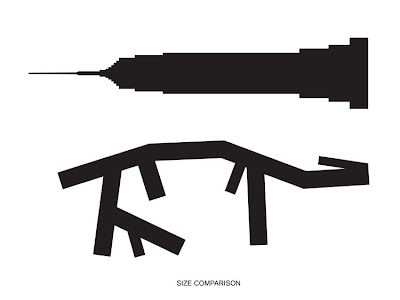

“Horizontal Skyscraper”: The Vanke Center, despite being only 35m tall, is one of the largest skyscrapers in the world. It just happens to be horizontal. In fact, if the Vanke Center were stood up vertically, it would be as tall as the Empire State Building. The building houses apartments, condos, offices, and a hotel, and will be the new headquarters for China Vanke, one of the country's largest real estate developers. - from the developer.
Kind of a cool way to solve the "tower" problem.
Sorry for picking on your idol jk3. I've only seen him lecture once. It was unintentionally hilarious.
BG info for vanke headquarter in shengzhen of mainland china:
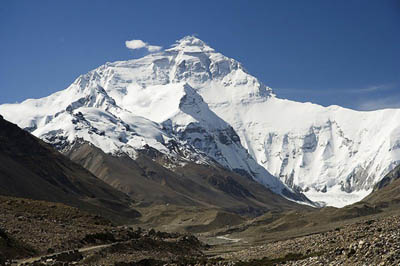
the chairman of Vanke is an adventurer. He climbed Himalayas once.
Their RE finance research team is very powerful.
Here are all 7 entries for one of the largest competition for a property in "the bund" of ShangHai last year.

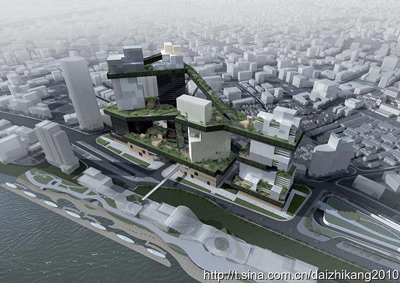
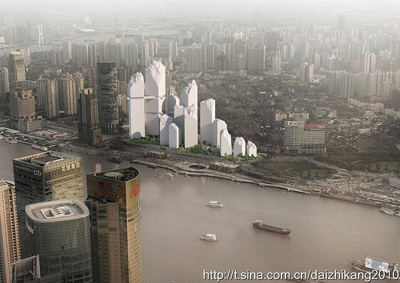
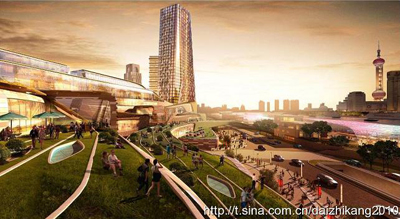
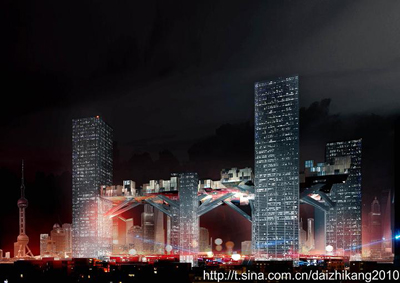
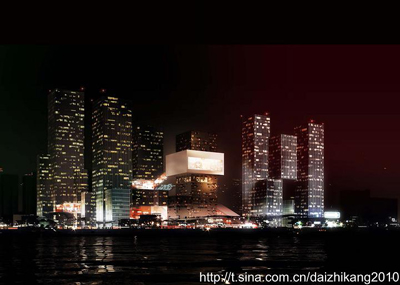

Would you guys like to pick who is the winner? Maybe some of you were involved in this competition?
This is a very large parcel. Programming requires for mixed use. Everything except airport and sports arena( kidding, just want to make explanation faster) Sorry, I don't have time to post other information. Remember, when you try to select a winner, you should think like a real estate developer.
I don't have enough information to know which building I would choose, but the third one down that shows the hazy, smoggy atmosphere seems the most realistic.
Jbushkey: why?
It seems there is a pretty nasty smog problem over there.
I agree with Rusty.

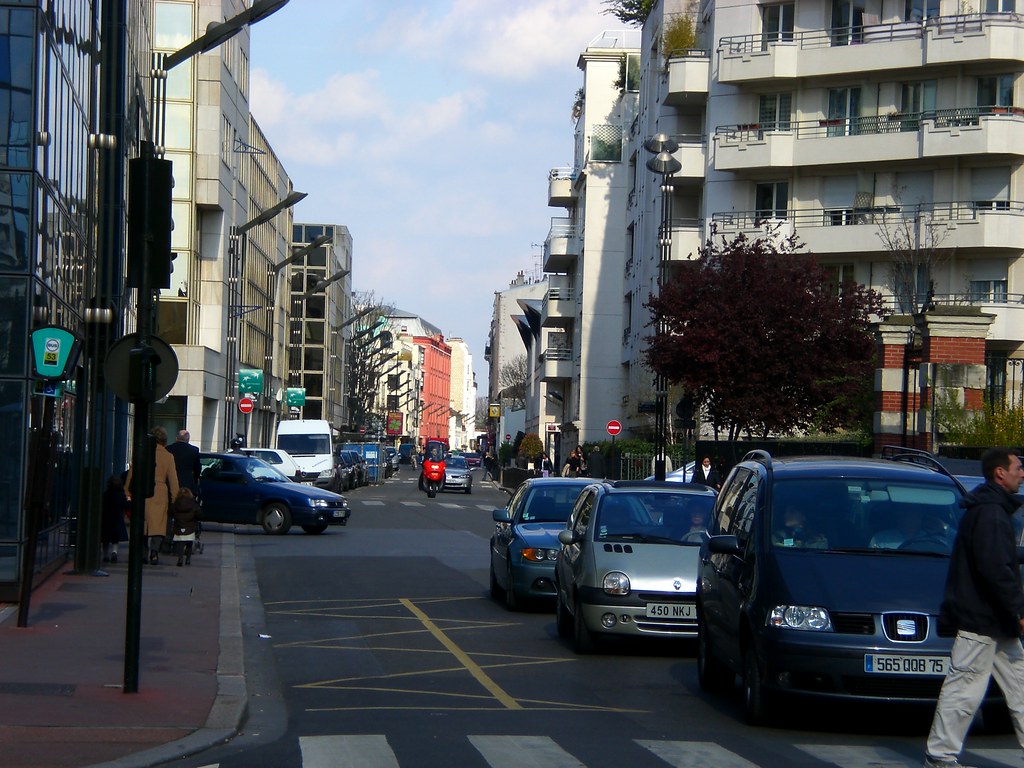

Regarding population densities, Kolkata (Calcutta), India is infamous for it's low-rise, 90,000+ people per square mile farming communities.
The majority of these buildings are less than 5 stories high. And most of these "towns" like Baranagar (91,220 people per square mile) and Titagarh (99,293 people per square mile). These places are also literally only like 1-3 square miles a piece too.
Other than Taiwan, China's population densities are overall not even in the top 50. Countries like France, Belgium, Greece, Indonesia, Phillipines and Spain are known for their extreme population densities.
What should be pointed out here is that all of the countries with high densities that also have a lot of towers are islands.
The most densely populated city in the US is Union City, NJ (part of New York City). With a surprising 52,000 people per square mile, it has almost no towers in it.
Napoli, Greece. 67,000 people per square mile.
Levallois-Perret, suburb of Paris, France. 67,000 people per square mile
Sint-Joost-ten-Node, Brussels, Belgium
thats very interesting ux
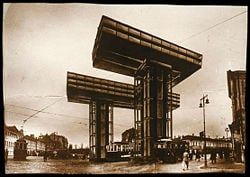
i guess it really underlines the fact that density is not a useful indicator for anything beyond itself.
about holl. he calls it a horizontal skyscraper in homage to el lissitzky. i sorta assumed most folks got the reference since he takes the idea rather literally
wasn't just zaha and koolhaas using russian constructivism as starting point for ideas way back in the 90's.
Block this user
Are you sure you want to block this user and hide all related comments throughout the site?
Archinect
This is your first comment on Archinect. Your comment will be visible once approved.